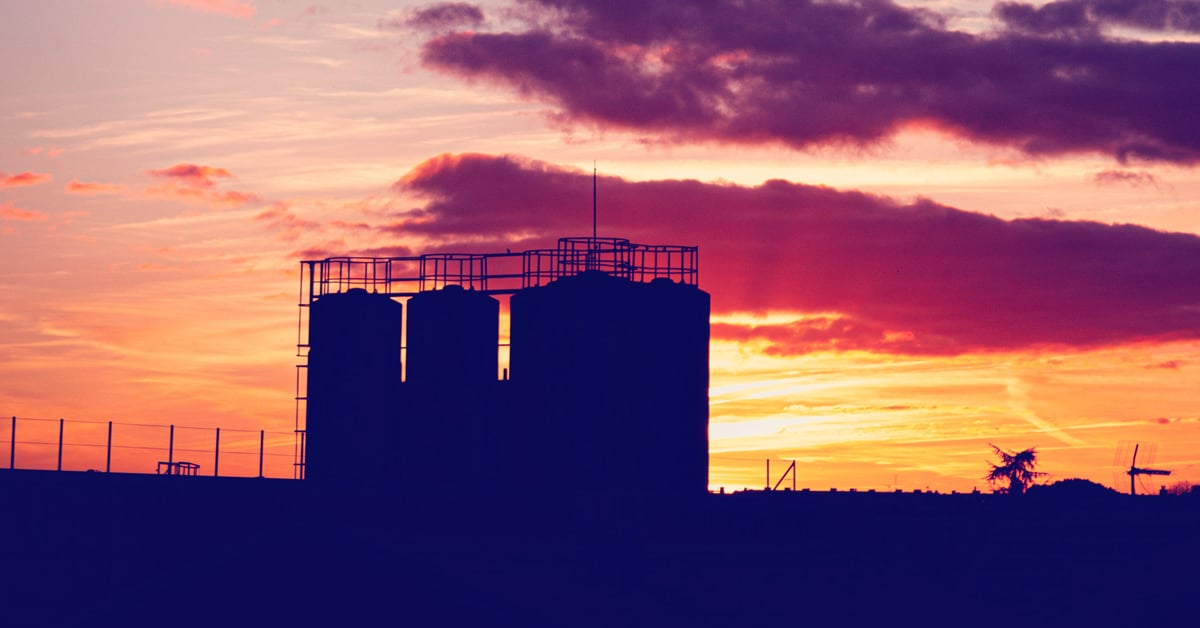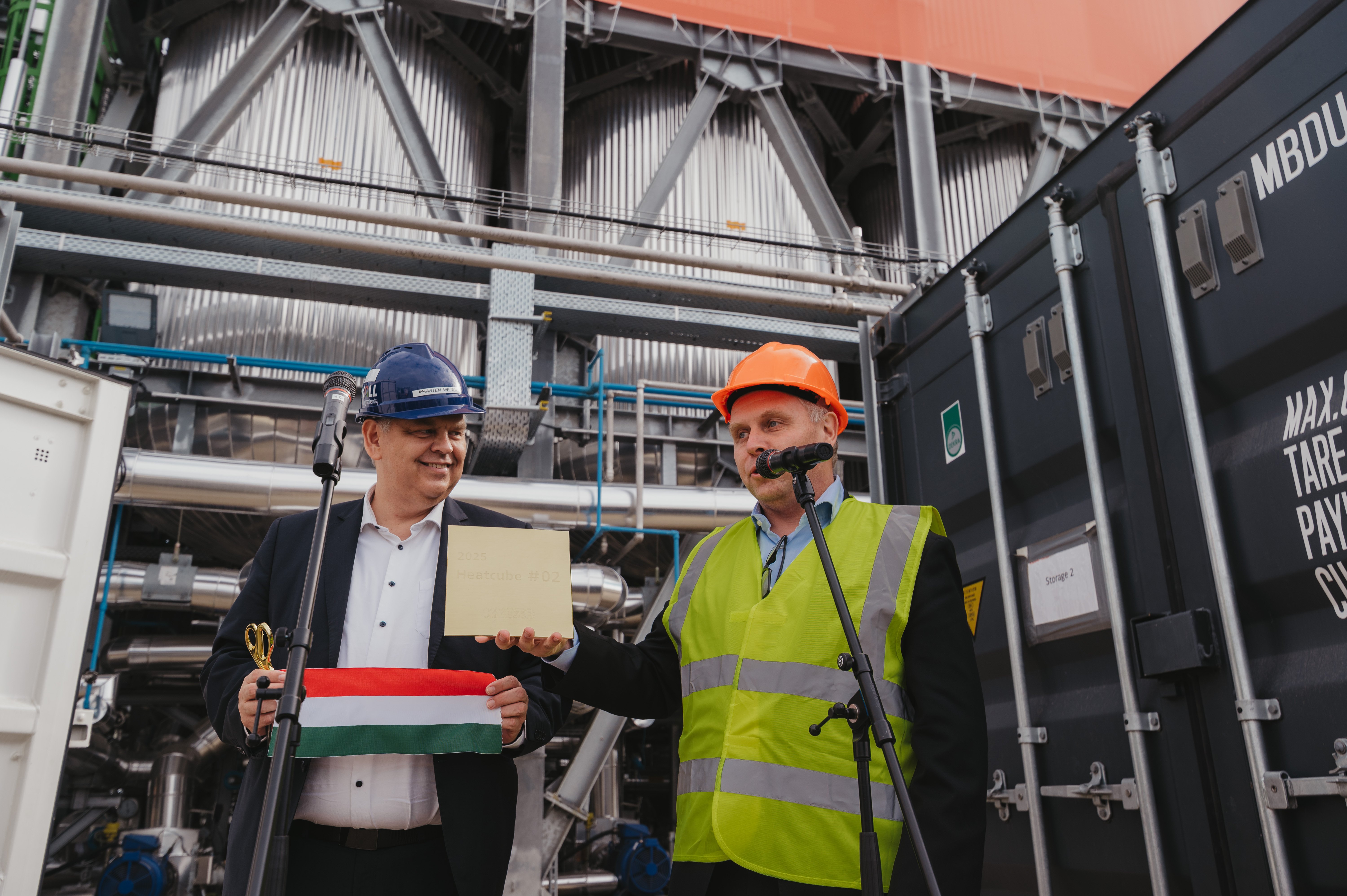European factories are shutting down, and people are being laid off because of skyrocketing gas prices. The problem is: gas will not be cheap in the future. What’s the solution? Thermal batteries.
When you think about a battery, you might think: energy goes in and energy goes out. Here's the twist: a battery is not always a battery. You see, we are not talking about those AA batteries in your remote control. We are talking about a larger thermal battery that can deliver green, cheap and stable energy, in the form of heat, to any industry out there - industries that need steam or hot air in the making of their products. This means almost anyone, making anything.
– Half of overall global energy consumption is used in the form of heat, and 50 percent of that heat is used in industrial processes. That includes during the making of food, paper, pulp, cookies, coffee, steel, and medicine – all kinds of stuff, says new business development manager at Kyoto, Simen Valåmo.
Right now, most factories have a gas boiler (a large entity filled with water that gets heated by gas and generates vapour or steam). This boiler supplies the steam needed for their production lines. The problem is that factories are shutting down, or laying off people because they cannot afford the high price of gas. Gas prices are continuously increasing, and although they will probably reduce in the future, CO2 taxes will keep pushing gas costs up.
– Yes, right now the world, and especially Europe, is in the midst of an energy crisis. There is a low supply of gas, but many people who need it. So, in the classic supply/demand relationship - gas prices, as well as the base price of electricity that follows the gas market, skyrockets, says Valåmo, an engineer who has worked for several years in financial, green and energy markets.
– But the energy price will surely go down at some point - right?
– Yes, the price levels seen now are not sustainable, and in the future, the gas price will go down. But the cost of using gas will not see the same decline, says Valåmo.
– Why?
– There is a difference between the gas price and the price of using gas. Using gas actually entails three cost drivers: you need to pay for the gas itself; get it delivered through your pipes, and you need to account for steadily increasing CO2 taxes.
If one thinks “well, there are no other alternatives” for a company's heat needs than a gas boiler or an outlet, they’re wrong. There is an alternative. There are now fully functioning, large-scale thermal batteries, that can absorb energy coming from wind and sunlight, store it, and deliver that heat or energy in different forms, in days or even weeks later.
– This means that gas boilers are no longer needed. And as Europe is accelerating its decarbonization of gas and coal use in all industries, gas boilers will all eventually become obsolete, says Kyoto's Simen Valåmo, who believes there are many reasons to choose a thermal battery over a gas boiler:
6 reasons why a thermal battery is better than a gas boiler
1. Gas pollutes and the “polluter pays”.
In the future, the use of natural gas, which pollutes our world, will stop. The work to halt all use of fossil fuels is already in place. This means it will be more difficult and more expensive to rely on gas as a source of energy. The gas price will eventually reduce, but the use of gas will cost much more. The price of using gas comes from three factors: the cost of natural gas; the cost of distribution; and the cost of CO2 taxes, which will continue to rise.
2. Investments in green energy solutions are being subsidized.
When gas prices skyrocket, either more gas pipelines and fields for gas production are developed, or demand for gas decreases. With an ever-increasing world population, this is not sustainable, so, we need new energy solutions to replace our reliance on gas. Green solutions. To speed up the green shift, companies across the globe, who are working towards new green energy solutions, or companies wanting to implement new green energy solutions have been receiving and will receive, many more economic incentives in the future. There is a lot of capital available for green technical solutions and investments right now. Gas will not enjoy the same level of economic or political subsidies.
3. Electricity can be cheaper than gas. If you can store it.
The energy market of the future will be very dependent on the weather, which is out of human control. What we can control are machines, and software, that can store natures gifts in the form of energy. Decarbonization will be impossible without energy storage. The availability of renewable energy, but also its volatility, will continue to increase, which is why a thermal battery is necessary - to make wind and sun on-demand forms of energy. There is a large source of cheap, green energy available to us, but it needs to be stabilized. Thermal batteries allow you to buy the cheapest electricity, at off-peak hours, but still have the flexibility to use that electricity when you need it.
4. Batteries will be a partial “shield” against the energy market.
With a thermal battery, you can hedge electricity prices “as low as”, instead of “as high as.” If you charge a thermal battery at night, when the energy price is cheaper, you will be in control of your own energy costs. You won’t have to worry about the volatile energy market. You can make a shield against unstable energy bills and make sure they do not ruin your business or life.
5. Thermal batteries are made with non-toxic materials.
Thermal batteries never pollute! They’re made without using any harmful substances, so if there is a leak, nothing bad will happen. When a thermal battery is being used there are no CO2 emissions. It is a low-cost, low-risk solution to the green energy shift.
6. They have low investment and operating costs.
The battery is complex, in the way it works, but the actual technology behind a thermal battery is not expensive. It runs on salt and software. The investment cost, therefore, is quite low. The costs of running the battery, which has a lifetime of 25 years, are also very low. The battery is very intuitive, so there is a minimized need for constant employee supervision or repetitive maintenance.


